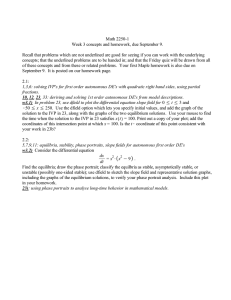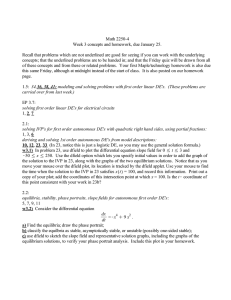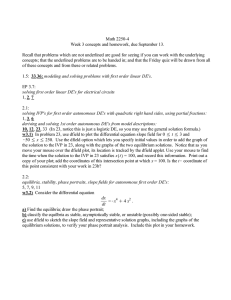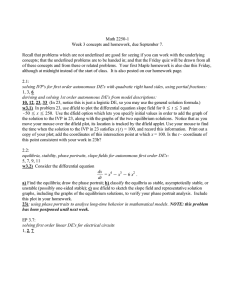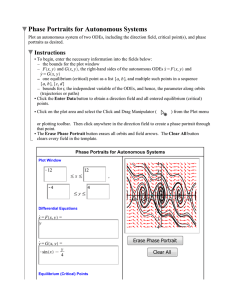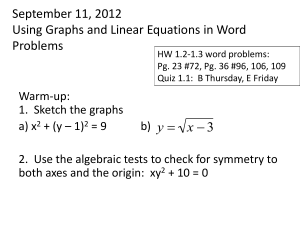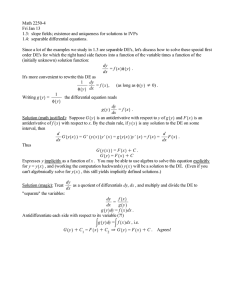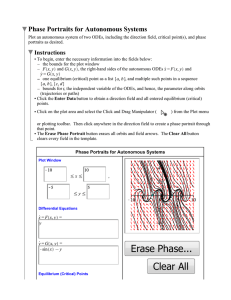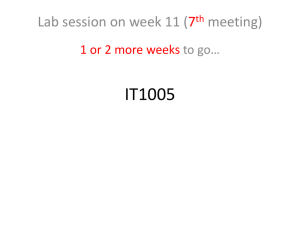Math 2250-010 Week 3 concepts and homework, due January 24.
advertisement
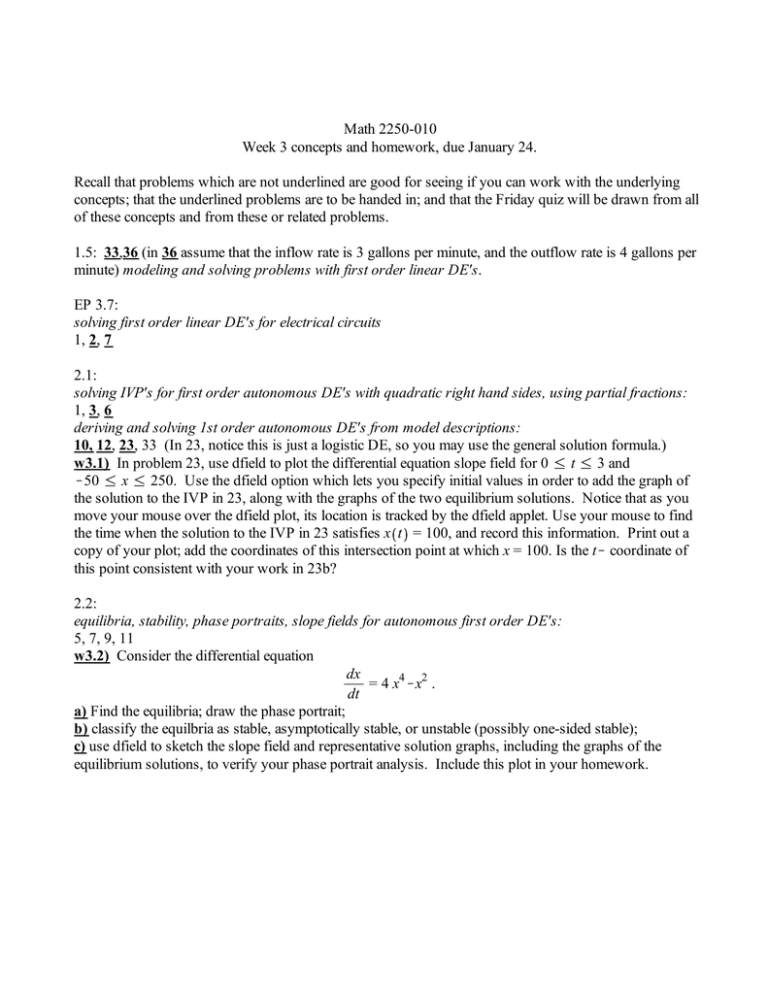
Math 2250-010 Week 3 concepts and homework, due January 24. Recall that problems which are not underlined are good for seeing if you can work with the underlying concepts; that the underlined problems are to be handed in; and that the Friday quiz will be drawn from all of these concepts and from these or related problems. 1.5: 33,36 (in 36 assume that the inflow rate is 3 gallons per minute, and the outflow rate is 4 gallons per minute) modeling and solving problems with first order linear DE's. EP 3.7: solving first order linear DE's for electrical circuits 1, 2, 7 2.1: solving IVP's for first order autonomous DE's with quadratic right hand sides, using partial fractions: 1, 3, 6 deriving and solving 1st order autonomous DE's from model descriptions: 10, 12, 23, 33 (In 23, notice this is just a logistic DE, so you may use the general solution formula.) w3.1) In problem 23, use dfield to plot the differential equation slope field for 0 % t % 3 and K50 % x % 250. Use the dfield option which lets you specify initial values in order to add the graph of the solution to the IVP in 23, along with the graphs of the two equilibrium solutions. Notice that as you move your mouse over the dfield plot, its location is tracked by the dfield applet. Use your mouse to find the time when the solution to the IVP in 23 satisfies x t = 100, and record this information. Print out a copy of your plot; add the coordinates of this intersection point at which x = 100. Is the tKcoordinate of this point consistent with your work in 23b? 2.2: equilibria, stability, phase portraits, slope fields for autonomous first order DE's: 5, 7, 9, 11 w3.2) Consider the differential equation dx = 4 x4 Kx2 . dt a) Find the equilibria; draw the phase portrait; b) classify the equilbria as stable, asymptotically stable, or unstable (possibly one-sided stable); c) use dfield to sketch the slope field and representative solution graphs, including the graphs of the equilibrium solutions, to verify your phase portrait analysis. Include this plot in your homework.
